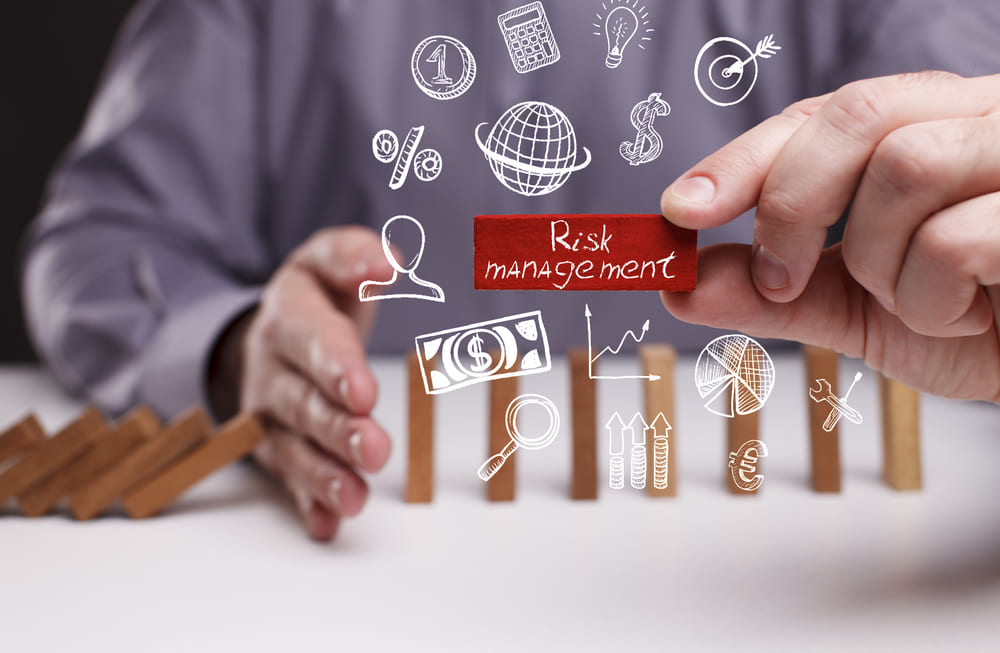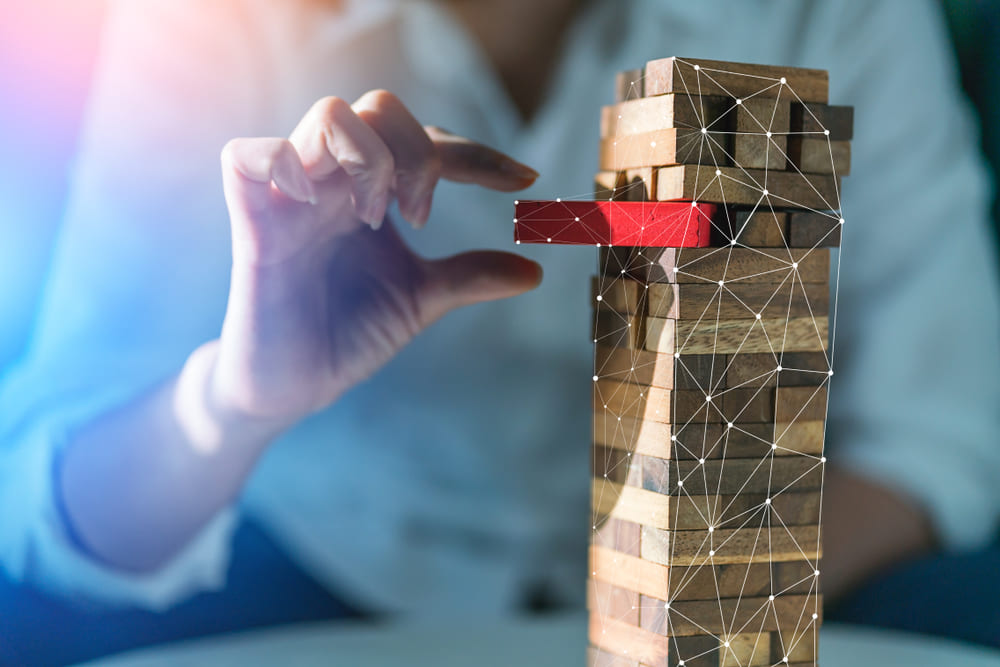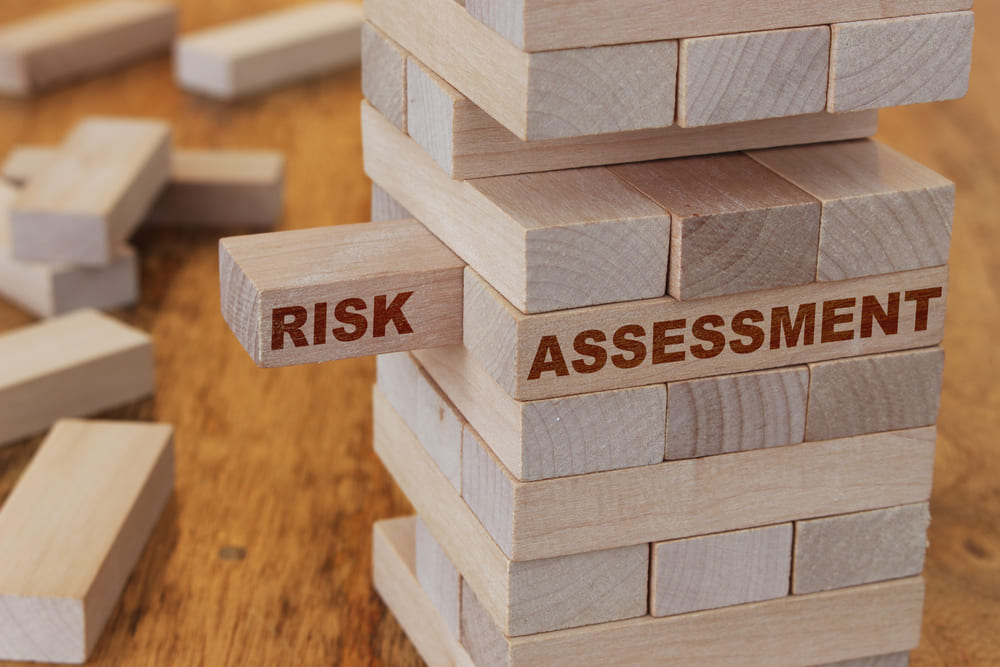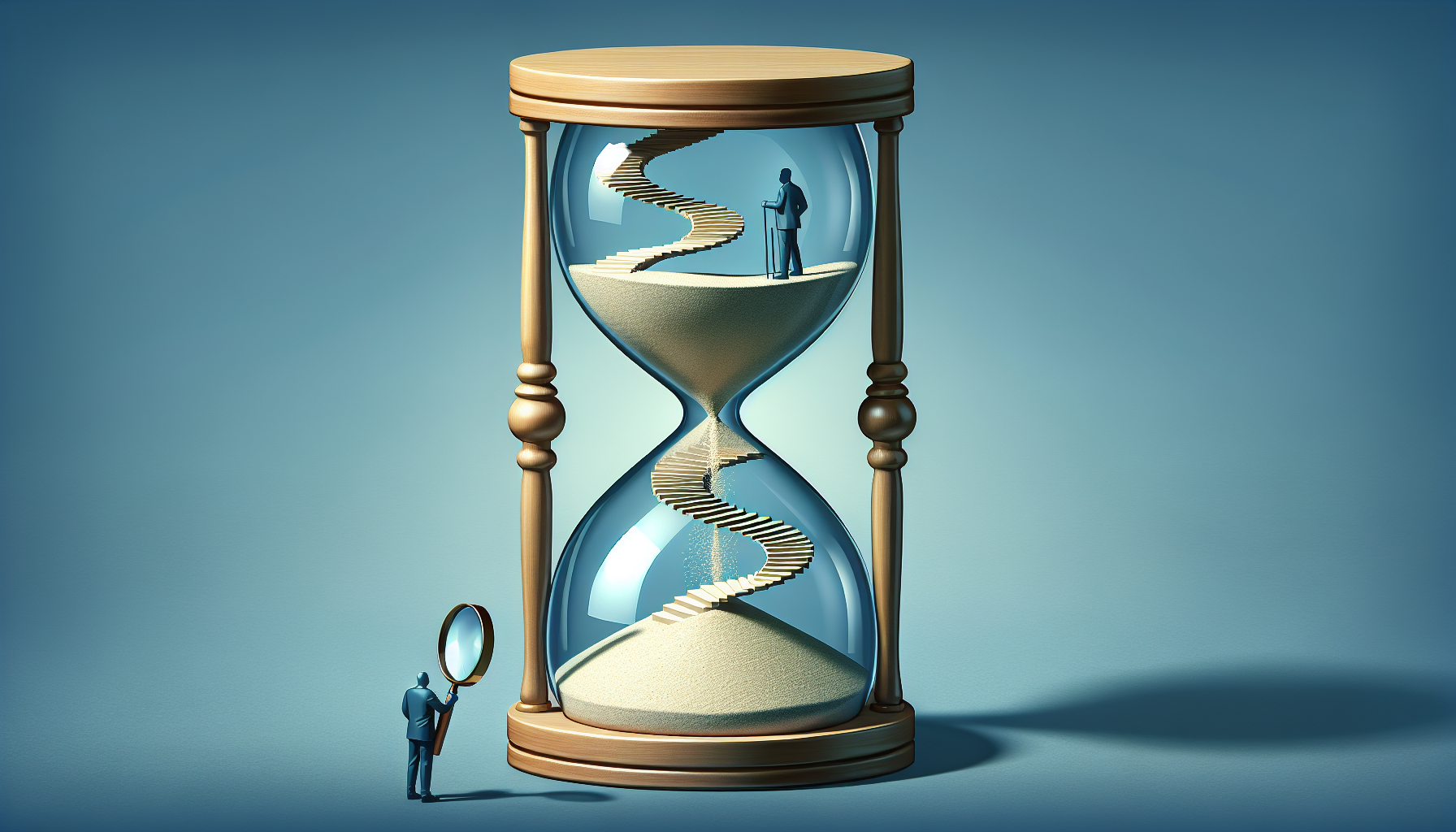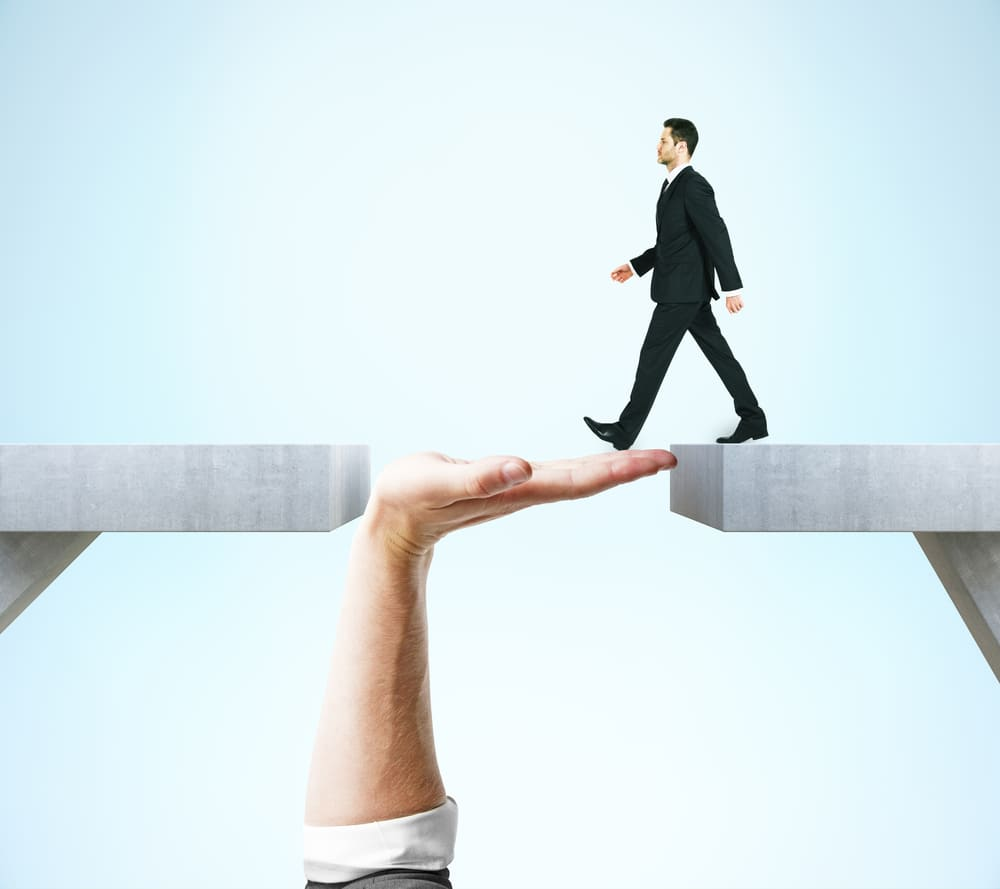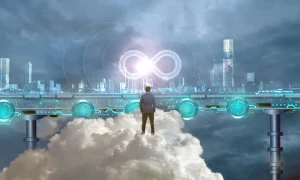Do you want to become an expert in risk management for your company? Understanding the different phases of the risk management lifecycle – identification, assessment, mitigation, monitoring and review, is essential. This comprehensive guide will break down each stage and demonstrate how they work together to create a strong defense against risks while facilitating informed decision-making.
Key Takeaways
- Risk management is a proactive process integral to organizational strategy that includes identifying, assessing, controlling, monitoring, and reviewing risks to an organization’s capital and earnings, with a focus on improving performance and developing a risk-aware culture.
- The risk management lifecycle comprises five main phases – risk identification, risk assessment, risk mitigation, risk monitoring, and risk review – each playing a critical role in safeguarding an organization’s objectives and enhancing its resilience.
- Effective risk management requires a tailored framework aligned with organizational strategy, clearly established roles and responsibilities, and the use of appropriate tools and techniques, including risk registers, risk matrices, and project management software, to navigate challenges and facilitate successful outcomes.
Understanding Risk Management
Risk management is more than just a response to risks. It calls for vision, foresight, and planning. In essence, risk management is a systematic approach to identifying, understanding, and dealing with potential threats that might affect the operation of a company. Effective risk management system when reducing expenses and building a culture of risk awareness, a company’s performance can be improved. It is a change from being a responsive to proactive.
The concept of a ‘risk lifecycle’ is vital in project management and in the strategy of the organization because it highlights the need to manage risks at each stage of a project from the perspective of protecting organization goals and stakeholders.
To understand the risk management theory, one must consider the significance of treating risks prior to entering the management lifecycle. Risk Management is about recognition, prioritization and preventing risks that can be dangerous to the financial situation of an organization. The objective is not total elimination but rather effective management of the listed risks by following processes such as identification, analysis, the application of prophylactic measures, and perpetual monitoring.
Defining Risk
When we talk about risk from the perspective of business and projects, we mean any circumstances that could change the outcome of a project. Such risks may result in both positive and negative impacts on deliverables, timeframes, and cost. It is critical to realize that every decision or activity within an organization has associated possible outcomes.
Risk identification is crucial when discussing risks in the business environment. The first kind is individual risk which is about particular occurrences that might affect a particular project. Generally, project risk requires assessment of all potential elements that may affect the final outcome of the entire project. Finally, an organization also faces business risks which do not affect a single element but instead influence the whole organization through finances, resources, employment status, and physical assets.
These three distinct categories must be acknowledged in order to be able to identify precisely and manage effectively the risks within an organization. Knowing where the problems fit in each class, the right measures can be taken to gain the control of the situation before it goes out of control. However, the importance of identifying and classifying potential threats from many angles is evident for considering their management in a business or project environment.
The Role of Risk Management
A well-developed risk management contributes greatly to the strategic planning and decision-making process of the organization. It encompasses the process of assessing, quantifying and managing potential risks to the capital and earnings of the organization. These risks may be financial risks, legal risks, natural disasters and the like, all aimed at defending the objectives of the organization.
Proactive Approach in Risk Management lifecycle
To ensure business sustainability, resilience, and agility, organizations need to adopt a proactive attitude towards risk management. This enables them to predict potential risks in advance and manage them properly. The critical components of this process include the estimation of all types of risks and their interdependencies that can lead to ripple effects on the company’s strategic goals. The major risk categories that need to be assessed are regulatory and compliance risk, financial crime risk, operational risk, and the risk of taking decisions.
A change has been made from the traditional department-oriented approach to risk management towards an all encompassing enterprise-wide approach that is known as enterprise wide risk management. This alteration indicates a collaborative, strategic, and organizational approach to dealing with potential threats to its operation.
Risk Estimation Analysis
Risk estimation analysis with synthetic measures such as benchmarking metrics should be carried out to identify possible risks in areas such as forms, scams and illegal activities, operational loopholes, key personnel behaviors, critical calls inside firms, frauds, or wrong financing decisions and the best ways to ensure that such risks are minimized and controlled at every step of the risk estimation analysis. Some industries utilize risk scoring techniques based on accurate computation models. The methods are aimed at quantifying the levels of probability for known ill-effects across the specified short-term periods.
This prevents instability by creating value-added initiatives that guarantee a sustained high performance that keeps business going. All possible problems aimed at help to manage risk, hence, eliminating adverse effects.
Further Reading: Risk Management: Ultimate Guide to Navigating Uncertainties
The 5 Phases of the Risk Management Lifecycle
In this section, we will delve deeper into the fundamental aspects of risk management known as the risk management lifecycle. This crucial process is composed of five phases.
- Identifying potential risks
- Assessing their impact and likelihood
- Implementing measures to reduce or eliminate them
- Continuously monitoring for any new threats or changes in existing ones
- Routinely reviewing the effectiveness of all actions taken.
Each stage plays a critical role in effectively managing risks, ensuring a comprehensive and strategic approach towards protecting an organization’s objectives and promoting its resilience.
1. Risk Identification
The risk management process starts with the identification stage, which involves identification of possible threats to the objectives of an organization. This is an essential aspect of risk management as these risks come from different sources, some of which are internal, such as employee illness or restructuring, and some are external, like political or environmental changes.
Many approaches and instruments are used at this stage to detect potential hazards. The latter includes brainstorming, SWOT analysis, root case analysis, interviews, and document reviews. For a proactive and comprehensive risk identification measures, they should be dynamic through consistent undertaking of scenario planning exercises using project management software for early risk detection though with the external stakeholders participation.
Further Reading: The Ultimate Guide To Conducting A SWOT Analysis: Uncover Your Competitive Edge
2. Risk Assessment
Upon identifying the risks, the next step is to assess the risk. This stage of the process is all about the scrutiny and assessment of risk assessment risks so as to identify their likelihood as well as impact, which provides a fertile ground for prioritization. It is important to include the concept of ‘risk probability’ at this stage since it assists in determining the probability of the occurrence of risks.
Modern qualitative risk assessment tools like Probability/Impact rating scales now stress the need to evaluate and rank risks according to their likelihood with the use of risk matrix and scoring methods. In the meantime, quantitative assessment entails assigning numerical values to high priority risks for an in depth probabilistic analysis that further underlines the significance of ‘risk probability’ in risk evaluation and prioritization.
The assessment phase involves updating the risk register with details such as:
- Priority
- Urgency
- Trends in qualitative analysis
- Probabilities and cost/time projections in quantitative analysis
Annual Loss Expectancy (ALE) is a fundamental tool used in quantitative risk assessment that helps in establishing feasible business objectives and targets by calculating the financial loss expected over one year for assets at risk.
3. Risk Mitigation
The approaches utilized in risk mitigation include avoidance or transfer, reduction, and accepting the risk. Such approaches are critical in the development of mitigation plans that would reduce the adverse effects on projects. They are recorded in the risk register during the Plan Risk Response process.
The type of action selected for risk reduction depends on the nature and level of the risk. This may be avoidance, reduction, transference or acceptance.
At risk response planning, many factors, such as project requirements and resources available, are to be taken into account in deciding which strategy is to be used to address each of the identified risks from the register.
4. Risk Monitoring
Risk monitoring is a very significant element of risk management which implies that risks are being permanently traced and the measures implemented are being assessed. This is a continuous process which has to evolve over time to maintain complete cover and continuous watch over any possible threats.
The monitoring of risks is an essential component of this approach, indicating the overall necessity of monitoring risks as part of the project development. This covers the routine evaluation of the risk response plan effectiveness and writing reports about the risk management status. It emphasizes the fact that risk monitoring is a continuous activity that involves recognizing, responding to, and reining in risk change and maintaining the knowledge and discipline of the risk management.
Risk monitoring includes the continuous tracking of the identified risks, as well as the regular re-assessment of the current ones through the risk registers. Audits aimed at detecting emerging risks, or risks that were not anticipated, are essential in effective risk management.
The consistency and accuracy during every stage of the management lifecycle of a project is important for the effective monitoring of risk. This necessitates updating the general risk mitigation plan and particular measures within pre-determined risk management plan regularly and thus, keep on the ready for new emerging threats.
5. Risk Review
The risk review is the final stage of the risk management life cycle. This step is aimed at the evaluation of the whole risk management process using qualitative and quantitative risk analysis to enhance thе future risk response. An important part of this phase is the identification of risk management, which is required to determine the organization’s strengths and weaknesses.
This evaluation gives insights which help in improving the risk management framework; stating the requirement of technology in simplifying the evaluation process, and the significance of the constant monitoring to ensure its effectiveness.
Regular reviews, and tweaking promote pro-activity and sustain resilience. Risk management plans should be reviewed at regular intervals to maintain their relevance and efficacy. True resilience in risk management comes from:
- Learning from actual risk events and control breakdowns, which feeds back into improving risk processes
- Accurate reporting throughout the risk management lifecycle
- Engaging stakeholders with essential information for decision-making
Periodic evaluations are crucial to ensure that the risk mitigation strategies being used are current and effective.
Further Reading: Mastering Risk Management Plan: Essential Steps For Leaders
Implementing a Risk Management Framework
Successful risk management involves customized approach which is directed by a comprehensive framework. This framework should provide roles and responsibilities, use of tools and technique, reporting system, and regular review and update plan. These activities should harmonize with the business operations and the project lifecycle as a whole.
Alignment of risk management practices with the strategic objectives of an organization enables it to support its endeavors and also ensures successful projects and informed decision making. The implementation of a strong risk management framework will as well encourage risk attitude that is tolerant hence improved organizational performance, decreased operational issues, positive reputation among stakeholders and high participation from both customers and employees.
Aligning with Organizational Strategy
The integration of risk management with the objectives of an organization leads to better decision-making, increased resilience and better attainment of strategic objectives. For successful strategic planning, it is important to implement a risk management tool that will help to identify potential risks and coordinate the mitigation activities with the strategic business objectives.
The risk tolerance of a company has a major effect on what strategies are chosen for controlling those risks. The “risk appetite” has to be in harmony with the critical values, capabilities, competitive environment, as well as organizational strategies. This calls for a thorough assessment of what risks are to be tolerated and what risks are to be eliminated in a systematic manner.
Organizations may choose established frameworks such as COSO ERM or ISO31000:2018 so that their risk management practices will be aligned effectively with their business strategies. Frequent evaluation and adjustments of the framework and implementation of appropriate risk mitigation measures help keep the overall strategy alignment and also adapt to newly emerging threats.
Establishing Roles and Responsibilities
One important part of the development of a risk management framework is role clarity. It includes the creation of a point person for each identified risk in a project, with appropriate oversight and resolution processes. Risk owners who are determined, on the other hand, enable exposure to risks to be reduced through systematic monitoring and prompt action.
With executive accountability, front line employees can help in the development of a robust risk aware culture of a company. Participation of those practices binds daily routine with global business results what leads to embedding of efficient risk management practices into everyday operations.
It is very important to sustain the open system of communication among various levels within the organization thus allowing all stake holders to be well informed and active in risk management.
Tools and Techniques for Effective Risk Management
Just as one cannot build a house without any tools, risk managers depend on different approaches and practices to create an appropriate structure for risk management. They include assessment of all types of risk, both qualitative and quantitative, the use of complex modeling software and project management programs to enhance efficiency, accuracy, and communication in risk management.
Risk Registers
The risk register, sometimes called a risk log, is an integral part of risk management. Risk register contributes to the risk management system and is set at a project initiation phase to record, monitor, and tackle likely hazards. The basic function of a risk register in the context of project management is to list all identified risks with their assessment and proposed mitigation action plans.
The details of each individual hazard to be recorded are based on specific categories such as probability level, impact level, response strategies, and trigger.
The process of adopting an industry-standard template and then creating a detailed list of threats speeds the process up by ensuring consistency across projects. Standard format helps in the coordination of different stakeholders involved, leading to clarity and organization among them, enhancing better communication. It is not only beneficial to the present projects but also future ones.
Such records are to be updated from time to time by the responsible party, which is normally the project manager. Who’s role is to verify accuracy and remain relevant for flexibility in dealing with any challenges that may be faced during development. In addition to providing a powerful benchmark, when similar projects were executed earlier, they also avail lessons learned from earlier experiences should they be repeated.
Risk Matrices
The risk matrix is one of the vital elements of risk management and represents a project management tool, which summarizes the risk in terms of the likelihood and potential impact, thus, allowing the risk manager to prioritize the risks and develop an optimal risk mitigation plan. This toolkit is usually presented as a grid with 3×3, 4×4, or 5×5 and aids qualitative analysis through the evaluation of importance of the identified risks.
When using a risk matrix, project managers provide probability and impact scores for each risk. They are then multiplied in order to obtain a total score which is used in prioritization for making strategic decisions regarding resource allocation. The visual representation of severity through heatmaps may be useful when assessing risks through this approach; however, it may eliminate some side characteristics of risks.
Furthermore, the reliability and efficiency of risk matrix depend on the quality and applicability of input data used in the assessment.
Project Management Software
In the digital world of today, risk management has found a new game changer in the use of project management software. These instruments include mass notification systems that enable teams to stay in touch by providing live feeds and monitoring feedback for faster and responsive actions. Integration of collaboration platforms with project management software removes barriers between teams, improving the level of communication and cooperation regarding risks.
The integration of project risk management processes in these tools as well helps in keeping individual team members engaged through provision of clear risk mitigation strategies. Project management software implementation enables the organization to improve the risk practices continuously using the data and experiences accumulated over time.
Overcoming Common Risk Management Challenges
Risk management is also prone to its unique challenges, as any other activity. Challenges may be unpredictable risks and changing conditions or problems with communication or teamwork. In this regard, is important to understand and control your organization risk exposure. It refers to evaluating the general risk level, classification and prioritization of risks to obtain complete assessment about the susceptibility of the business to distinct risk levels.
Such approach is indispensable in the adaptation to dynamic risks and the changes of the environment. Through the use of appropriate strategies and resources, these barriers can be minimized to ensure effective risk management is implemented.
Dynamic Risks and Changing Environments
Risk management is one of the biggest challenges of managing risks in an ever-changing business environment. It is important to constantly monitor these risks to be able to adapt and act accordingly. To achieve this, companies should:
- Avoid viewing risks as fixed entities
- Anticipate potential new threats
- Identify changes in existing ones
- Enhance decision-making processes
Organizations need to recognize the broader implications of risks, such as systemic challenges like data breaches, to their industry, economy, and society at large. Developing an agility and flexibility-focused culture helps organizations to respond to imminent or emerging threats by updating procedures and policies or implementing necessary changes.
Communication and Collaboration
Risk management is hard to work with due to the requirement to have clear communication and cooperation. Miscommunication of risks may lead to higher costs of mitigation. Also, regularly meetings with project team members and stakeholders are necessary for the revision of risk data and updating of risk management strategies.
To standardize communication of risks, teams and sponsors can use project management software. This ensures that the stakeholders are well informed of any developing risks. One of the essential components of the risk management team is the improvement of communication channels that are necessary to timely updates on information needed for carrying out normal risk assessments.
Summary
Risk management is vital in the dynamic world of business and is also a strategic advantage. Through comprehension and utilization of the diverse phases of risk management lifecycle, organizations can predict, manage, and minimize risks and as a result, resilience is enhanced and performance is improved. In order to minimize the risk in the project, there should following steps: identification steps, assessment steps, and effective mitigation steps with monitoring and reviews.
Proper risk management does not include full removal of all risks. However, it requires understanding them fully so that they are handled well for the opportunities of the future. It is these risks that businesses need to be able to manage successfully and come out stronger and the right framework with clear roles and responsibilities, as well as tools and techniques makes this possible. Even though efficient risk mitigation may be difficult to achieve, a proactive stance toward it is rewarding in the long run.
Frequently Asked Questions
What are the 5 stages of the risk management cycle?
The process of managing risks can be broken down into 5 stages.
- Recognition and identification of potential risks.
- Examination and assessment of the identified risk factors.
- Evaluation to determine the level and significance of each risk.
- Implementation or execution of measures to mitigate, transfer or avoid the risk entirely.
- Regular observation and reevaluation in order to ensure ongoing effectiveness of chosen strategies for addressing any remaining risks.
This cycle enables organizations to proactively engage employees.
What are the 7 steps of risk management?
Use of 7 steps in risk management is an essential practice that ensures the long-term prosperity and sustainability of the organization as provided in the Risk Management Framework.
Why is risk management important for businesses?
Risk management is crucial in businesses in that it enables the businesses to foresee and manage possible threats, spurs a positive approach to risks, improves performance, and minimizes losses.
What is a risk register?
Risk register or simply risk log is a tool used for recording and monitoring possible risks at a project. It is a list of risks with their assessment and proposed measures of mitigation or management.
How can businesses overcome challenges in risk management?
Companies are to address obstacles in risk management by consistently monitoring potential risks, adjusting strategies based on changing conditions, holding regular meetings for reviewing and monitoring risks, and utilizing project management software to improve communication. The above measures are indispensable for businesses in managing and reducing the effects of other types of risks.


